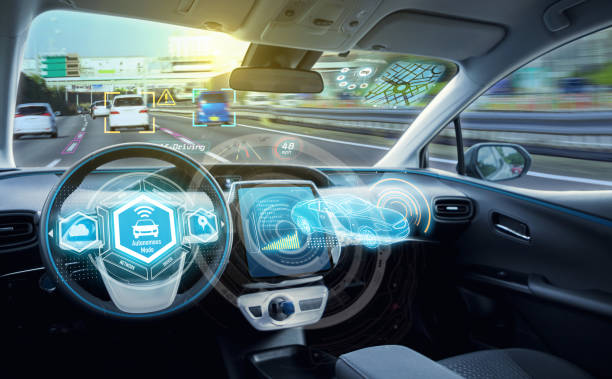Disclosure: When you purchase through links on our site, we may earn an affiliate commission.
So, you’re behind the wheel of your sleek new electric vehicle (EV), and that futuristic Augmented Reality Head-Up Display (AR HUD) is lighting up your windshield. But beyond the cool factor, have you ever stopped to wonder what this tech actually does for your safety?
Strap in, because AR HUDs are more than just fancy visuals — they’re like having a smart co-pilot who never blinks. From projecting speed and navigation directly onto your line of sight to warning you of potential hazards before you even notice them, these displays are game-changers for modern driving.
In this guide, we’re diving into practical, everyday ways to use AR HUD to make your EV driving experience safer, smoother, and just a bit more fun. We’ll show you how this technology can help you stay focused on the road, avoid surprises, and even reduce reaction times.
Whether you’re dodging cyclists in the city or cruising on the highway, learning the best ways to use AR HUD could be the smartest upgrade to your driving skills yet. And hey, if it saves you from one more awkward brake slam, that’s a win, right?
So let’s break it down — here are some real-world ways to use AR HUD that make your ride not only cooler but a whole lot safer.




What Is an AR HUD and Why Should You Care?
AR HUDs project important driving info — speed, navigation, hazards — right onto your windshield, blending digital cues with real-world views. This minimizes eye shifts from road to dashboard, letting you see warnings exactly where you’re looking.
Think of it as a digital guardian angel sitting on your dashboard, whispering useful tips and flashing big yellow signs if something’s about to go sideways.
Real-Time Hazard Alerts: Your Eyes in All Directions
What really sets AR HUDs apart is their ability to spot dangers before you do and display alerts seamlessly in your field of view:
- Blind Spot Warnings: The system monitors side and rear sensors. Got a sneaky cyclist or car lurking? The HUD pops up warning icons right in your peripheral vision before you change lanes. No more accidental surprise scrapes or “oops” moments.
- Pedestrian Detection: In busy city streets, AI-powered cameras detect crossing pedestrians or sudden movements around your vehicle. The HUD highlights these potential hazards with bright indicators, helping prevent those heart-stopping close calls.
- Speed Limit and Traffic Sign Recognition: The HUD constantly scans road signs, keeping you posted on current speed limits and warnings such as sharp turns or school zones. If you’re speeding, the HUD will nudge you gently but firmly (no ticket-writing yet, but maybe soon).
- Forward Collision Warnings: Radar and LiDAR sensors track vehicles ahead. If you’re closing in too fast, the HUD flashes a big red alert on your windshield, giving you precious extra seconds to brake or swerve.
- Lane Departure Alerts: Drift out of your lane without signaling? The HUD gives you an immediate heads-up with arrows or vibrating steering wheel prompts, keeping your ride smooth and on track.
Ways to Use AR HUD Safety Features on Urban Roads and Highways
- Urban Driving: The streets are a jungle of pedestrians, cyclists, parked cars, and unpredictable drivers. AR HUD hazard alerts make it easier to navigate complex intersections, alerting you instantly when jaywalkers or cyclists appear in your path. Your EV’s HUD also projects turn-by-turn navigation with precise lane guidance, so no last-minute lane swaps while juggling your morning coffee.
- Highway Cruising: At highway speeds, reaction time is critical. AR HUDs keep you aware of fast-approaching vehicles in your blind spot, maintain safe following distances with adaptive cruise control integration, and offer clear, unobtrusive navigation prompts so you never miss an exit or speed zone change.
How to Get the Most Out of Your EV’s AR HUD Safety Features
1. Keep Your Windshield and HUD Area Clean
Dirty or smudged glass can obscure AR projections. A clean windshield ensures crisp, visible alerts without ghosting or blur.
2. Adjust Brightness and Position
Tailor the HUD’s brightness to your environment — brighter for sunny days, dimmer for night driving. Position the display just below your direct sightline to prevent distraction but keep info easily visible.
3. Customize Alerts
Most AR HUD systems let you choose which warnings you want active. If you find too many HUD alerts overwhelming, dial down non-essential notifications and keep only critical hazards like collision warnings and speed alerts.
4. Stay Alert and Use AR HUDs as a Supplement
Remember, AR HUDs are assistance tools, not replacements for attentive driving. Eyes on the road; AR HUD on the job.
The Tech Behind the Safety Magic
Leading EV makers like Xpeng, Kia, Panasonic, and Cadillac leverage cutting-edge AI and sensor fusion to power AR HUDs with features such as:
- High-brightness, wide-format displays projecting up to 87 inches right on the windshield
- AI algorithms that recognize and predict road hazards, lane boundaries, vehicles, pedestrians, and more
- 3D navigation overlays that visually map lanes and turns precisely on the road view
- Real-time adaptive information that changes according to driving conditions (rain, fog, night)
Conclusion
So, if you’re still wondering about the best ways to use AR HUD, start by thinking of it as your co-pilot — always there with real-time info, guidance, and subtle warnings when you need them most.
From navigating busy intersections to spotting hazards early, there are plenty of ways to use AR HUD to make driving not just easier, but safer. And hey, one of the smartest ways to use AR HUD? Let it multitask, so you can keep your eyes on the road and your mind at ease.
